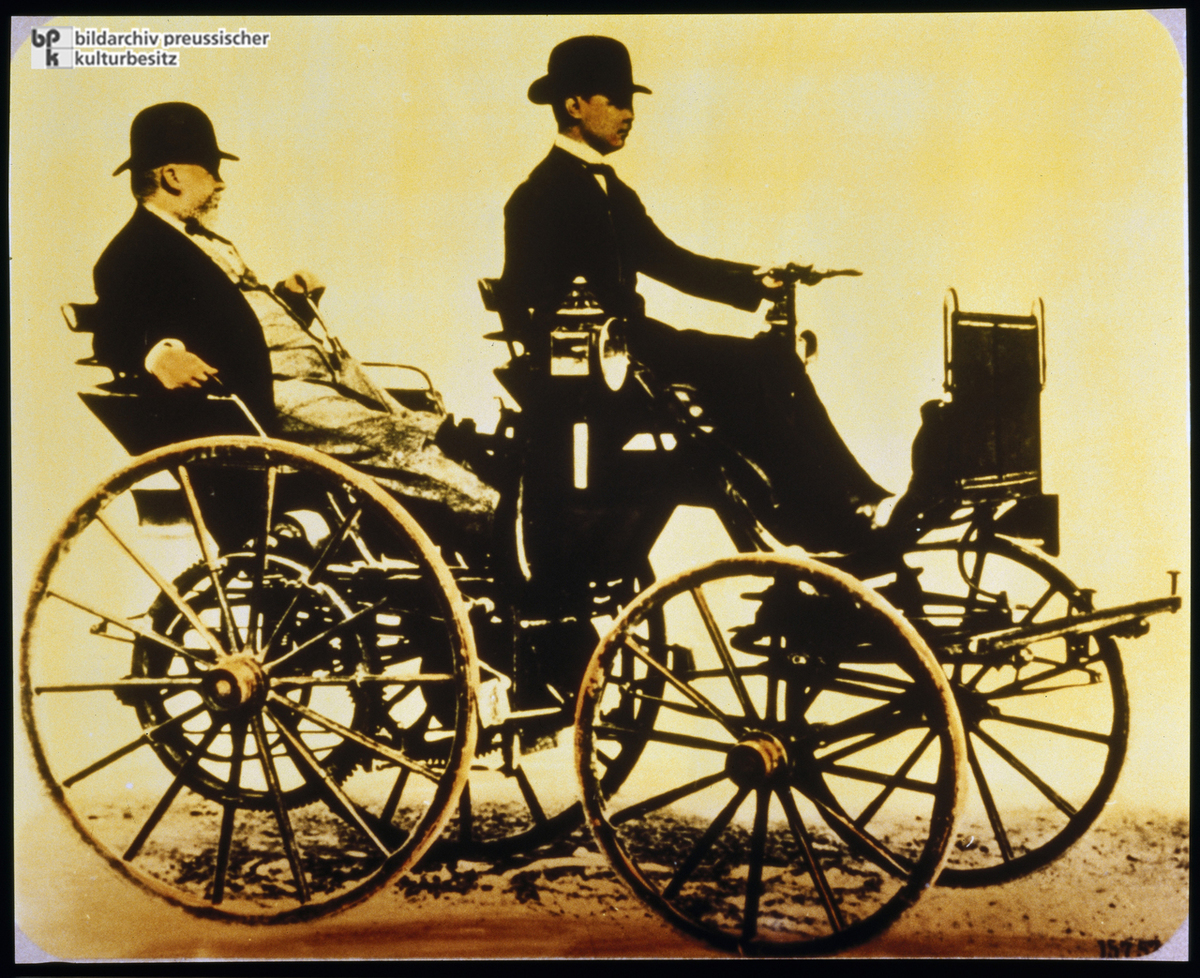Gottlieb Daimler with Son Adolf in his First Vehicle with an Internal Combustion Engine (1886)
Abstract
Gottlieb Daimler (1834–1900) was the prototypical inventor of the scientific age. Working variously in Germany and elsewhere in Europe on everything from agricultural equipment to scales to metal presses, his tireless conceiving, experimenting, analyzing, and applying showed the extent to which progress in knowledge is both evolutionary and revolutionary. He was obsessed with creating an engine small enough to mount on any kind of locomotive device, including boats, streetcars, or even hot air balloons. In 1883, he developed what he called “Daimler’s Dream,” an internal combustion engine fueled by petroleum that could be throttled, which is to say its operator could control fluid flow and therefore engine power. In 1885, an upright version of this engine was affixed to a two-wheeled Reitwagen or “riding car,” resulting in the world’s first internal-combustion motorcycle. Daimler's four-wheeled automobile, pictured here, was similar to Karl Benz’s three-wheeler from the same year.
Source

Source: Gottlieb Daimler with son Adolf in his first Vehicle with an Internal Combustion Engine (1.5 hp, 18 km/h)
© bpk